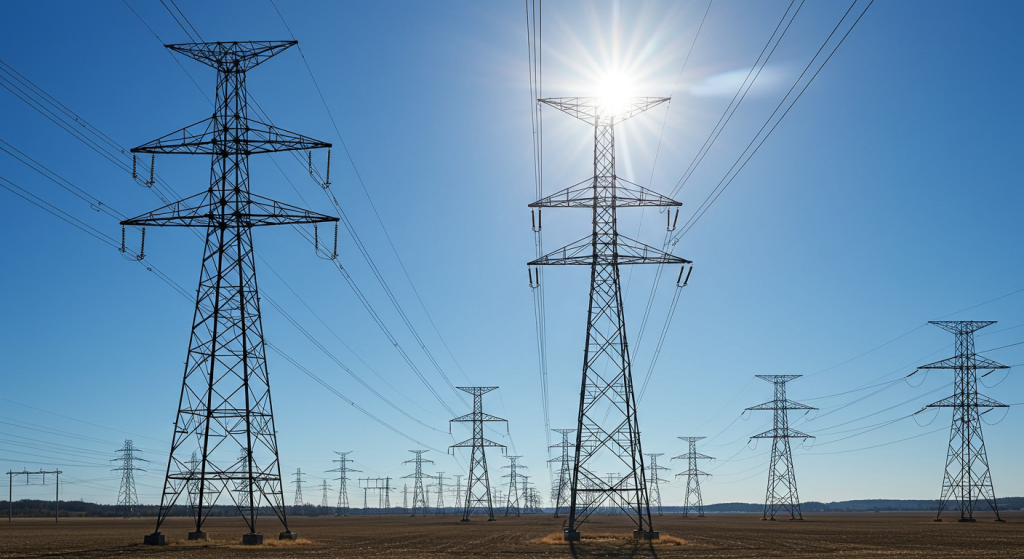High-Voltage Line Towers: Understanding Their Purpose
2025-04-30
Engineering Backbone of Modern Power Transmission
The transmission power of electricity relies on physical structures that support powerlines, namely High-voltage towers, which are referred to as transmission towers or electricity pylons. These structures are immensely crucial in delivering electricity over long distances. The generators of the energy place it into substations, and subsequently, after is then used by paying customers. X Y Tower focuses specifically on technologically advanced construction to fulfill industry needs. High-voltage line towers, like steel lattice towers, monopole towers, and guyed transmission towers, are used alongside electric power systems. High-Voltage Steel Transmission Towers support additional loads placed vertically over them. These towers are essential components in modern technological architecture, they offer reliable delivery regardless of snow, winds, and earthquakes.
Components of High-Voltage Transmission Line Towers
The galvanized steel Q345, or a stronger variant of steel, is the primary material for creating these towers. Such steel is selected due to its remarkable mechanical features and its anti-corrosion capability. Since these towers will be used in regions with extreme weather, including coastal and high-humidity areas, the steel has to be further enhanced using a process known as galvanization.
Some of the advantages of galvanized steel include:
• Extensive durability.
• Long lifespan.
• Limited need for maintenance.
• Great resistance to rust and corrosion.
These attributes make the galvanized electric pylon an ideal solution for utility providers.
Electricity Pylon Design
Every single one of the high-voltage steel towers is designed with particular performance benchmarks for each of them. The modular design technique makes it easy to adapt and customize for design based on the voltage level for the transmission, the land features, and other project requirements.
Tower Designs:
• Self-Supporting Towers: This is used for long-distance high-voltage transmission.
• Guyed Towers: These are low-cost towers that may be used in broad, flat land areas.
• Monopole Towers: Used where space is limited, like in urban areas.
Tower Height:
The height of towers ranges from 20 meters to over a hundred meters. This is dependent on:
- The voltage level (10kV to 500kV)
- The type of terrain (mountainous, flat, or forested)
- Right-of-way requirements
- Clearance requirements for safety and loss of power
Safety Features of High-Voltage Towers
It is important to consider the safety of the personnel as well as the infrastructure. Therefore, each Steel Transmission Tower for High Voltage at XY Tower comes with preset safety measures, including:
- Grounding Systems: Prevent damaging the equipment from electrical faults.
- Lightning Protection: Minimize damage from lightning.
- Guard Rails and Ladders: Allow for the maintenance of the equipment at greater heights.
These measures add to the electric control system's dependability and prevent unwanted incidents.

What Pros of XY Tower High Voltage Line Towers?
Strong and Highly Resistant
Our galvanized electric pylons require low maintenance and can withstand long-term use. They are approximately over three decades old, which makes both rural and urban power businesses ideal purchasers.
Varied Range of Voltage
The towers made by XY Tower have an operating voltage amperage from 10kV to 500kV, resulting in a power shortage.
Tower Construction Materials
Every component in our products, like custom-made telescoping flag poles with adjustable arms, comes with precision-designed and crafted features that will capitalize on the global market for quality.
High Voltage Line Towers:
Tested with the American Canadian Flag, either used/ displayed, adjustable arms to position perfectly to take the best shot with a camera mid zoom.
Design Considerations
Every flag we create is precision-targeted at maximizing functionality while minimizing impact through adaptogenic bioceramics.
Precision Optimized for the Symmetry of the Globe
• Electrical Clearance: Keeping a safe radius around the conductors and the tower structure to avoid the danger of electrical arcing.
• Foundation Design: Designing the tower's foundation to bear its weight and withstand environmental forces.
• Material Selection: Selecting materials concerning environmental factors, load conditions, and type of structure.
For comprehensive instructions regarding the design of transmission towers, see the more detailed information in the Design Manual for High Voltage Transmission Lines.
Maintenance and Inspection of High-Voltage Line Towers
The structural safety and reliability of high-voltage line towers can be achieved through regular maintenance and inspection.
• Visual Inspections: Routine inspections around the structure to check for signs of corrosion, damage to the structure, and deterioration of various parts.
• Thermal Imaging: The process of scanning with infrared beams to identify ‘Hot Spots’ causing some electrical malfunction.
• Foundation Assessment: Checking the foundations of the tower for any indicated damages caused by erosion or boundaries.
• Component Testing: Checking the terminations and other main parts, such as insulators and conductors, for damage, repair, and safety checks.
To maximize the dependability and operational longevity of components and systems in the transmission infrastructure, a thorough maintenance approach is useful in the framework provided by the Transmission Line Inspection and Preventive Maintenance Program.
Innovations in Tower Design
With the progress of technology advances, novel high-voltage line towers have been designed:
• Composite Materials: The Application of modern composites in insulators and other supporting parts of the tower aids in making it less heavy while enhancing its usage.
• Modular Construction: Creating modular tower parts for speedier assembly and increased scalability.
• Smart Monitoring Systems: Enabling real-time tracking for sensors, IoT devices, and structural as well as environmental parameters.
These developments make power transmission more effective and dependable while minimizing environmental footprints.
Conclusion
XY Tower High-Voltage line Towers have unparalleled reliability, strength, and durability, and are built to last. Whether your project is looking for monopole towers, self-supporting lattice towers, or any custom structure, we provide complete modular solutions for all business requirements. For more information regarding our extensive product catalog or to get a quote for your next transmission project, head to our website.

Hey, I’m Chunjian Shu
"X.Y. Tower: Reliable, innovative solutions for high-quality towers and electrical equipment with professional service.
